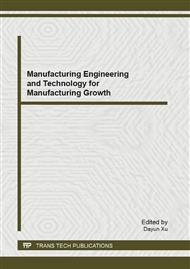p.396
p.403
p.410
p.420
p.427
p.433
p.440
p.445
p.451
Finger Vein Recognition Using Local Mean Based K-Nearest Centroid Neighbor Classifier
Abstract:
One of the newest methods of identification system is finger vein recognition which is a unique and successful way to identify human based on the physical characteristics of finger vein patterns. In this paper, a new type of classifier called Local Mean based K-nearest centroid neighbor (LMKNCN) is applied to classify finger vein patterns. Finally, the significance of the proposed method is proven by comparing the results of LMKNCN classifier with traditionally used K nearest neighbor classifier (KNN). The experimental results indicate that the proposed method in this research confidently merits the performance of the finger vein recognition method, as the gained accuracy using the proposed method is higher than that of the traditionally used method KNN. The maximum obtained accuracy of LMKNCN test with 2040 number of finger vein images is 100% while for KNN is 98.53%.
Info:
Periodical:
Pages:
427-432
Citation:
Online since:
December 2012
Price:
Сopyright:
© 2013 Trans Tech Publications Ltd. All Rights Reserved
Share:
Citation:


